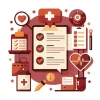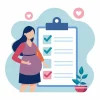
Facility Cleanliness Feedback Template: Maintaining Hygiene Standards
Facility cleanliness involves maintaining an environment free from dirt, germs, and contaminants, focusing on health, safety, and hygiene. It includes regular cleaning, proper sanitation, and keeping all areas in good condition.
Clean facilities create a positive atmosphere, reduce infection risks, and enhance user experience. Gathering feedback is crucial for identifying areas for improvement and maintaining high cleanliness standards.
Importance of Facility Cleanliness
Facility cleanliness is vital for safety and health, minimizing infection risks and showing commitment to quality.
1. Health and Safety
Unclean facilities can harbor harmful bacteria, viruses, and allergens that pose serious health risks to individuals. Regular cleaning helps prevent the spread of diseases and ensures that people are working or living in a safe environment.
2. Enhanced Customer Experience
Cleanliness is one of the first things people notice when they enter a facility. A well-maintained environment makes a positive first impression on visitors and reflects a company’s professionalism and commitment to quality.
3. Improved Employee Productivity
A clean and organized workspace leads to better productivity. When employees work in a clutter-free and sanitary environment, they are less likely to get sick and are more focused on their tasks.
4. Compliance with regulations
Many industries face strict cleanliness and hygiene regulations set by health departments, labor safety organizations, and specific industry bodies like the FDA for food establishments. Non-compliance can lead to fines, legal problems, or business closures.
5. Reduced maintenance costs
Regular cleaning minimizes wear and tear on equipment, furniture, and infrastructure, preventing damage from dirt and grime. This extends asset lifespan and reduces the need for costly repairs or replacements.
How to Create an Effective Facility Cleanliness Feedback Template
An effective feedback template for facility cleanliness should be easy to use, accessible, and comprehensive enough to gather the necessary information. Below are the essential steps to creating an effective cleanliness feedback template:
1. Understand the purpose
The first step in creating a feedback template is to understand its purpose. Are you looking to assess general cleanliness, identify specific areas for improvement, or address ongoing issues? Defining the purpose will help you structure your template effectively.
2. Identify key areas for feedback
Your feedback form should cover all areas within the facility that require a cleanliness assessment. These areas can include:
- Restrooms
- Hallways and corridors
- Offices or workstations
- Public or shared spaces (lounges, break rooms)
- Entrances and exits
- Windows and floors
- High-touch areas (door handles, elevator buttons, etc.)
Create categories for each of these areas to make it easy for respondents to provide specific feedback.
3. Use clear and concise language
Keep the language simple, clear, and concise. Avoid jargon or overly complex terms that may confuse respondents. The form should be easy to understand and fill out, even for those who are unfamiliar with the facility.
4. Incorporate rating scales
Incorporating rating scales (e.g., 1 to 5 or 1 to 10) allows respondents to provide a quick assessment of cleanliness levels. For example, you can ask respondents to rate the cleanliness of restrooms on a scale of 1 to 5, with 1 being “very dirty” and 5 being “very clean.”
5. Provide open-ended questions
While rating scales are helpful for quantitative data, open-ended questions allow respondents to provide qualitative feedback. These questions allow people to express concerns or suggest improvements in their own words. Examples of open-ended questions include:
6. Offer multiple submission options
To encourage participation, make sure your feedback template can be submitted both online and offline. Providing options such as mobile-friendly forms, email submissions, or paper forms can help you reach a wider audience.
7. Follow-up feedback
After collecting the feedback, it’s essential to acknowledge the input and follow up with actions. Let respondents know their feedback is valued and outline any steps being taken to address their concerns. This will create a culture of continuous improvement and build trust among users.
Example of Facility Cleanliness Feedback Form
Example :-1

Example:-2

Best Practices for Maintaining Hygiene Standards
To maintain high hygiene standards in your facility, consider implementing the following best practices:
1. Develop a cleaning schedule
A consistent cleaning schedule ensures that all areas of the facility are cleaned and sanitized regularly. Depending on the facility type, high-traffic areas may require more frequent cleaning.
2. Use proper cleaning supplies
Ensure that cleaning staff are equipped with the appropriate supplies, including disinfectants, cleaning agents, and equipment. For healthcare facilities, it’s important to use hospital-grade disinfectants that effectively kill harmful pathogens.
3. Train cleaning staff
Proper training is essential for maintaining hygiene standards. Train your cleaning staff on best practices for cleaning, disinfecting, and handling cleaning chemicals. Additionally, staff should be trained in hygiene protocols, including handwashing and personal protective equipment (PPE) usage.
4. Focus on high-touch areas
High-touch areas, such as door handles, light switches, and elevator buttons, are hotspots for germs. Make sure these areas are cleaned and disinfected frequently to minimize the spread of bacteria and viruses.
5. Encourage hand hygiene
Hand hygiene is one of the most effective ways to prevent the spread of germs. Ensure that hand sanitizers and handwashing stations are easily accessible throughout the facility. Display signage to remind staff and visitors to wash their hands regularly.
6. Monitor and review cleanliness regularly
Regularly inspect the facility to monitor cleanliness levels and identify areas that need improvement. Reviewing cleanliness standards and conducting periodic audits can help ensure that hygiene protocols are being followed effectively.
Conclusion
Facility cleanliness is crucial for the health, safety, and overall experience of everyone who uses the space. By implementing an effective facility cleanliness feedback template, you can continuously monitor and improve patient feedback in healthcare.
Ensuring that cleaning routines are adhered to, supplies are readily available, and feedback is acted upon, contributing to a cleaner and more hygienic environment.
Frequently Asked Questions
Why Is Facility Cleanliness Feedback Important For Hospitals?
Cleanliness plays a crucial role in patient safety and satisfaction. Feedback helps healthcare facilities identify areas where hygiene standards may need improvement and ensures that cleanliness is maintained at the highest levels.
How Can I Provide Feedback On The Cleanliness Of The Hospital Facility?
Most hospitals offer multiple ways to provide feedback, including surveys, online portals, suggestion boxes, or directly speaking with hospital staff. Your input is valuable in maintaining a clean and safe environment.
What Steps Does The Hospital Take After Receiving Cleanliness-Related Feedback?
Once feedback is received, the hospital reviews the comments, identifies specific areas of concern, and implements corrective actions. This may involve additional cleaning protocols, staff training, or addressing any other reported hygiene issues.
Can I Provide Cleanliness Feedback Anonymously?
Yes, most healthcare facilities allow for anonymous feedback to ensure patients feel comfortable sharing their honest experiences without fear of repercussions. Anonymous feedback is still taken seriously and used to improve hygiene standards.
Enhance Patient Care and NABH Compliance with LazyMonkey
LazyMonkey is your all-in-one solution for improving patient care, retaining more patients, and meeting NABH standards. Our powerful QR-based feedback tool enables you to capture real-time insights from patient feedback, discharge surveys, staff and doctor evaluations, and clinical research, while also streamlining inter-departmental communication.
Transform your healthcare facility today - reach out to us at hello@lazymonkey.in, or request a demo here!
Elevate Your Restaurant Experience with LazyMonkey
LazyMonkey’s QR-based feedback system helps you gather real-time insights from customers, track satisfaction levels, and enhance the dining experience. Get instant feedback on your menu, service, and ambience, and make data-driven improvements to boost repeat customers and reviews.
Improve your restaurant today – reach out to us at hello@lazymonkey.in, or request a demo here!
Empower Student Engagement and Campus Improvement with LazyMonkey
LazyMonkey offers a seamless way to gather student feedback, track satisfaction, and enhance campus life. From course evaluations to dorm feedback, our QR-based solution makes it easy to capture valuable insights and improve student retention.
Upgrade your university experience – contact us at hello@lazymonkey.in, or request a demo here!
Streamline Feedback and Drive Performance Across Your Enterprise/Franchise with LazyMonkey
Whether you manage one or multiple locations, LazyMonkey’s QR-based feedback system helps you gather real-time employee and customer feedback. Improve operational efficiency, track satisfaction, and make data-driven decisions to enhance brand consistency and growth.
Transform your franchise today – reach out to us at hello@lazymonkey.in, or request a demo here!
Enhance Customer Satisfaction and Service Standards in Banking with LazyMonkey
LazyMonkey empowers banks to capture real-time feedback from clients across branches. Improve customer experience, assess service quality, and ensure regulatory compliance with our QR-based solution, helping you retain clients and meet banking standards.
Elevate your bank’s customer care – contact us at hello@lazymonkey.in, or request a demo here!
Boost Customer Engagement and Mall Satisfaction with LazyMonkey
LazyMonkey’s QR-based feedback tool enables you to collect feedback from shoppers, track satisfaction, and enhance the mall experience. Gather insights on store services, cleanliness, and entertainment to create an unmatched customer journey.














